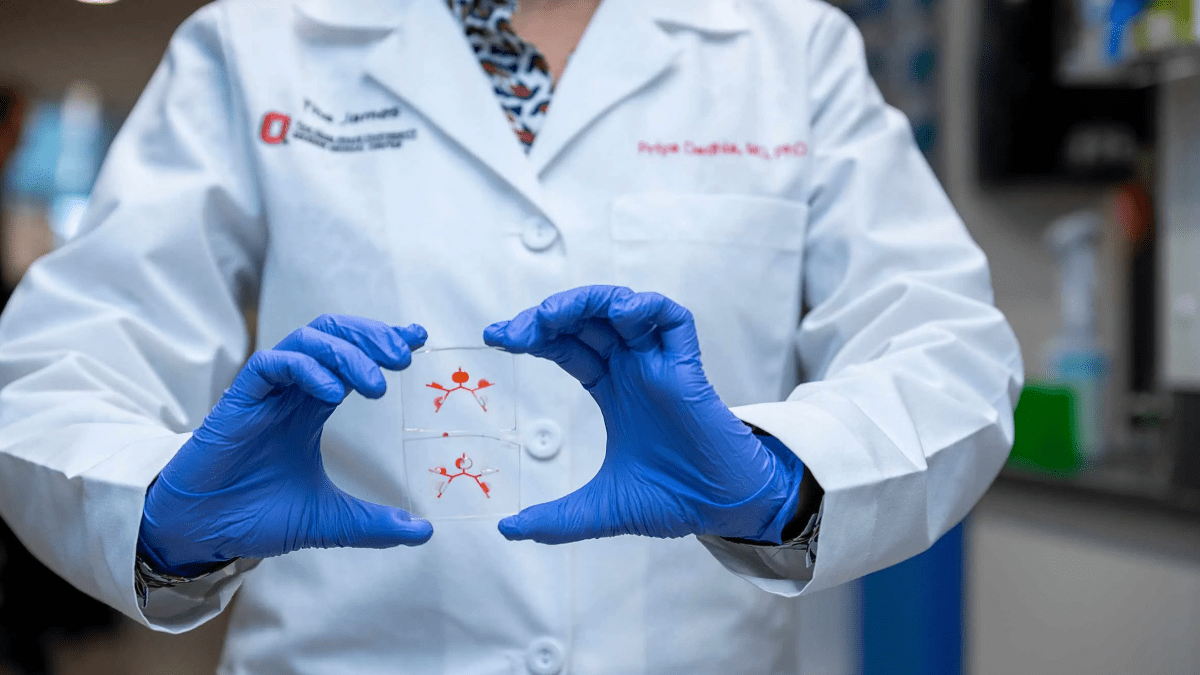Discovery of a novel microRNA mechanism provides insight into cardiac arrhythmia
 MicroRNAs (miRs) play a critical role in regulating numerous biological events, including cardiac electrophysiology and arrhythmia. Understanding a new action of miRs is the focus of a recently published study of miR’s biophysical modulation of cardiac cellular electrophysiology from researchers Jidong Fu, MD, PhD, and Isabelle Deschênes, PhD, both faculty members of The Ohio State University College of Medicine’s Department of Physiology and Cell Biology.
MicroRNAs (miRs) play a critical role in regulating numerous biological events, including cardiac electrophysiology and arrhythmia. Understanding a new action of miRs is the focus of a recently published study of miR’s biophysical modulation of cardiac cellular electrophysiology from researchers Jidong Fu, MD, PhD, and Isabelle Deschênes, PhD, both faculty members of The Ohio State University College of Medicine’s Department of Physiology and Cell Biology.
Scientists have known for several decades that cardiac electrophysiology is regulated by miRs through the canonical RNA interference (RNAi) mechanism—microRNA molecules form a RISC complex to inhibit gene expression and translation by targeting mRNA molecules. Less is known about the signaling process in the noncanonical pathway. The Ohio State College of Medicine study addresses this knowledge gap by demonstrating a novel mechanism of miR-ion channel, biophysical modulation that regulates cardiac arrhythmic risk.
The team investigated the RNA gene miR1, the predominant miR of the heart, and determined its ability to bind specifically with cardiac plasma membrane proteins. Using inside-out and whole-cell patch clamp recordings, they discovered an evolutionarily conserved direct binding between miR1 and an ion channel, inward rectifier potassium channel Kir2.1. miR1 quickly suppressed the function of Kir2.1, resulting in a significantly decreased current. Importantly, they found that this miR1-Kir2.1 physical binding exists endogenously in cardiomyocytes and modulates the function of the heart. They further studied the mechanism of this physical interaction and found that this biophysical action of miR1 is independent from its classical RNAi mechanism. They also investigated its pathophysiological relevance by using miR1-deficient transgenic mice and demonstrated that this biophysical modulation is involved in short QT/atrial fibrillation diseases.
“We are excited to discover a novel mechanism of miR-ion channel biophysical modulation that regulates cardiac arrhythmic risk,” says Dr. Fu. “A better understanding of microRNA actions will guide us to develop new therapeutic medicines with enhanced efficiency and efficacy.”
The team’s newly discovered, noncanonical biophysical mechanism takes only seconds to regulate/ modulate the function of target genes, as compared to the hours or even days that it takes for the canonical RNAi mechanism to operate. Their findings indicate that miRs can prevent arrhythmias through biophysically modulating ion channels before its RNAi regulation of protein expressions in diseased hearts. A defect of miR’s biophysical action might predispose patients to arrhythmias, offering an opportunity for further research and therapeutic intervention.
Dr. Fu, Dr. Deschênes and other members of the Ohio State College of Medicine team collaborated on this project with researchers from the MetroHealth System at Case Western Reserve University, Renmin Hospital of Wuhan University (Wuhan, Hubei, China) and the Institute of Mineralogy, Materials Physics and Cosmochemistry at the Sorbonne Université (Paris, France).



